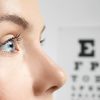
How to recognise the eye health gender gap
Why women are at greater risk of some eye diseases than men and the steps you can take to protect your eye health, by Dr Andy Hepworth from Essilor
Women are still at a greater risk of suffering from sight threatening conditions, according to a new global report1 and the UK’s ‘eye health gender gap’ is showing no signs of narrowing.
Whilst it may be surprising to many that there is a male/female divide when it comes to our vision, staggeringly in the UK one in four women are at risk of developing sight loss in their lifetime compared to just one in eight men, according to research by the Royal National Institute of Blind People2.
What is more, women are much more likely to develop age-related macular degeneration (AMD), glaucoma, and cataracts whilst some eye issues, such as Dry Eye Syndrome, are intrinsically linked to women.
With a third of people in the UK believing that the pandemic has had a negative impact on their eye sight, Dr Andy Hepworth from the UK’s leading corrective optical lens manufacturer Essilor explains why women are more susceptible to eye issues and shares some advice on how to give your eyes some additional TLC.
So why does this gender gap exist?
Essilor's Dr Andy Hepworth, explains: “Whilst there is a lot more research that needs to be done on the subject, there are a number of reasons why the disparity between male and female eye health could exist. To start with, women have a longer life expectancy than men which means that they are more susceptible to age-related eye issues, and end up living with these eye conditions for longer.
“Another factor are hormones. Women often experience changes in their vision during puberty, pregnancy, and menopause as a result of hormones. Even the menstrual cycle can have an effect.
“When females enter puberty, the sudden increase in oestrogen in the body may lead to an increase in short sightedness (myopia). Whilst during pregnancy a woman's body will have a constant surge of both oestrogen and progesterone, which can also cause blurry vision or trouble focusing. This is usually temporary and changes will reverse themselves a few weeks after delivery.
“During the menopause, women’s oestrogen and progesterone levels greatly decrease which also has an impact on vision. Menopausal women can experience a high build up of intraocular pressure, which is linked to glaucoma. This high eye pressure can lead to optic nerve damage, which causes vision loss. Dry Eye Syndrome is also more common in postmenopausal women due to the hormonal changes in the body.
How can women protect their vision?
Dr Andy Hepworth shares Essilor's five step guide to women’s eye health:
- Get your eyes tested regularly:
One of the absolutely fundamental things that everyone should do (not just women), is get their eyes tested regularly – at least every two years. More than half of all cases of sight loss are avoidable through early detection and regular eye tests can often detect symptomless sight-threatening conditions. You should also take the time to find out about your family’s eye health history to know if anyone in your family has ever been diagnosed with an eye disease or condition. This is because developing an eye condition can partly be due to genetics and in turn can be hereditary. By knowing this information you can inform your optician, who will be able to determine if you are at higher risk and can take the correct measures.
- Replace your eye makeup and brushes:
Make up can be a breeding ground for bacteria and fungus and you should pay particular attention to the products that you use around your eyes. Mascara, eyeliner and eye shadow should be replaced every three months to keep it as hygienic as possible and to reduce the chances of bacteria transferring to your eye and causing an eye infection. You should also take extra care when applying mascara – don’t do it on the go. A mascara brush in your eye can scratch your cornea which could need medical attention.
- Feed your eyes from within
It's not just carrots that are good for your eye health and eyesight. A diet rich in fruits and vegetables, particularly dark leafy greens such as spinach and kale, can support your eye health. Your eyes also benefit from omega-3 fatty acids found in fish, seaweed and certain seeds.
Weight can also affect eye health. Obesity in particular can increase your risk of developing diabetes, which can lead to vision loss due to diabetic eye disease.
- Reduce eye strain with yoga and the right corrective lenses
We’ve been exposed to more screen time than ever before and as a result instances of eye strain and Dry Eye syndrome are on the rise, potentially storing up problems for later life. It’s important not to take your eyesight for granted whilst you’re young so avoid putting your eyes through prolonged periods of strain. Make sure that you take regular breaks from your screen following the 20-20-20 rule – every 20 minutes look at something 20 feet away for 20 seconds. You can also try some eye yoga. You can do this anywhere, anytime. Look to the left, hold the position, repeat looking right. Look up, hold the position, repeat looking down. Repeat four times, closing your eyes and relaxing in between.
Wearing the right spectacle lenses – by making sure that your prescription is correct and the lenses are best suited to your lifestyle – is also extremely important. Once you are over 40 you are more likely to need varifocal lenses because of a normal loss of near focusing ability. There is a wide range of options available to suit your specific needs so make sure that you explore these with your optician and get your prescription and lenses checked if you have had them for a while. For example Variluxe Digitime lenses are varifocal lens specifically optimised for your digital activities and enhanced for smartphone use.
- Protect your eyes from the damaging effects of the sun
UV rays are as dangerous to your eyes just as they are to your skin. UV exposure over a lifetime, accelerates eye ageing which includes cataracts. Harmful Blue-Violet light is one of the factors recently identified which, over time can cause damage to retinal cells.
Glasses or sun glasses with an embedded filtration system offers front and back protection from harmful UV and Blue-Violet light. This type of filtration system will partially filter Blue-Violet light and absorb UV light, before it reaches your eyes. When out and about in the sun, ensure you’re wearing sun protective lenses. Sun protective lenses will again help to protect your eyes from harmful UV light.
You can also use Transitions technology, which are light intelligent. If combined with your spectacle prescription your lenses will automatically adapt to changing light conditions and help protect against harmful UV and Blue-Violet light outdoors.














